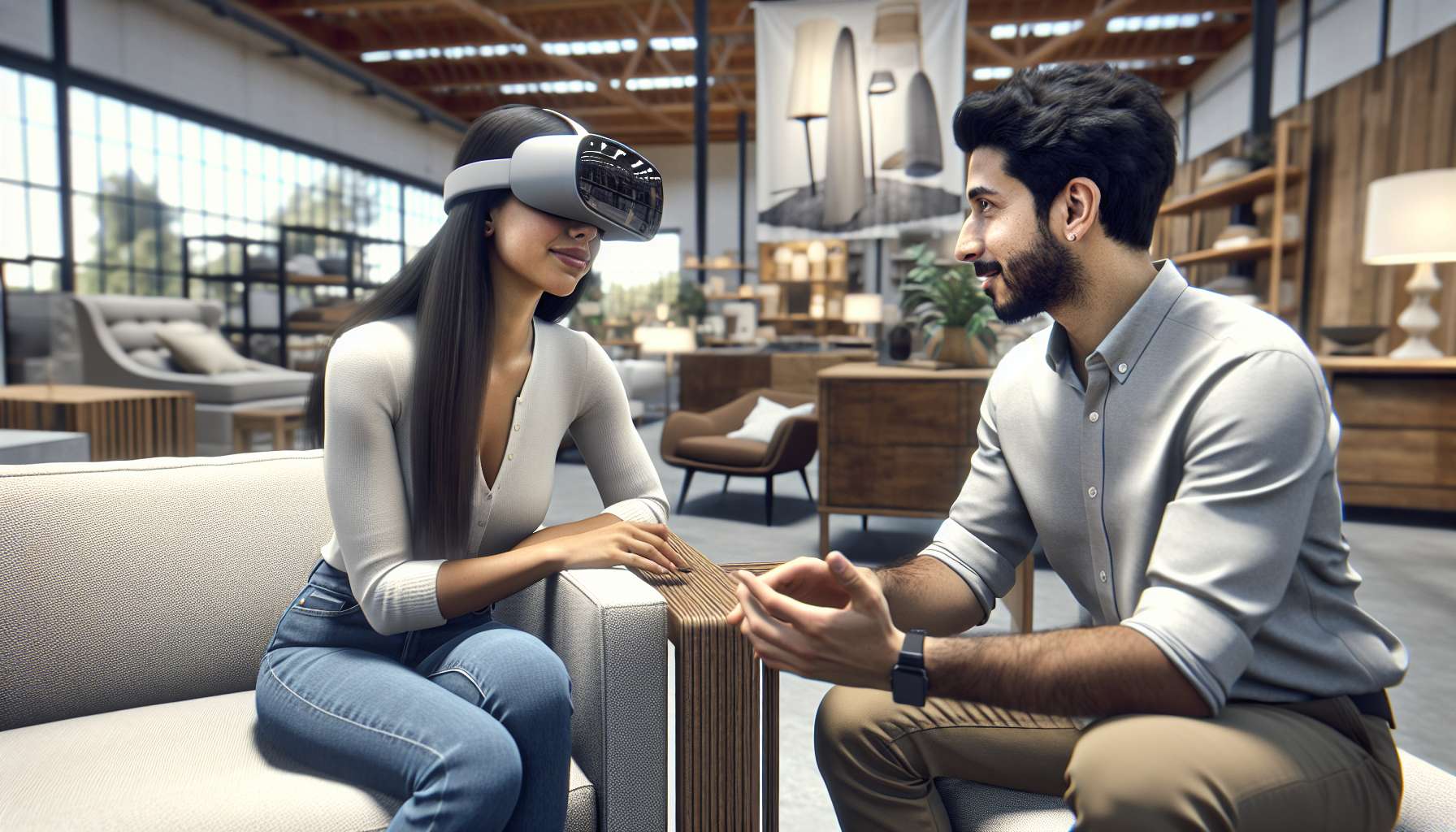The Power of AR Storytelling in the Furniture Industry
Augmented Reality (AR) has revolutionized the way we experience the world around us. From gaming and entertainment to education and healthcare, AR has found its way into various industries, enhancing our daily lives in unimaginable ways. One industry that has embraced the power of AR is the furniture industry, where it has proven to be a game-changer in the art of storytelling.
What is AR Storytelling?
AR storytelling combines the immersive nature of augmented reality with the power of storytelling to create a unique and engaging experience for customers. It allows furniture retailers to showcase their products in a whole new light, enabling customers to visualize how the furniture will look and fit in their own space.
Breaking Down the Jargon: How Does AR Storytelling Work?
AR storytelling in the furniture industry typically involves the use of mobile applications or smart glasses. These devices use computer vision and artificial intelligence algorithms to overlay virtual furniture onto the real world. By simply pointing their device at a specific area in their home, customers can see how a particular piece of furniture will look and fit in that space.
The Benefits of AR Storytelling in Furniture Sales
1. Enhanced Visualization: Traditional furniture shopping often involves guesswork and imagination. With AR storytelling, customers can see exactly how a piece of furniture will look in their home, eliminating any doubts or uncertainties. This enhanced visualization leads to more confident purchasing decisions.
2. Personalized Experience: AR storytelling allows customers to customize their virtual furniture by choosing different colors, materials, and styles. This level of personalization creates a sense of ownership and helps customers envision their dream space.
3. Increased Engagement: By incorporating storytelling elements into the AR experience, furniture retailers can create a more immersive and engaging shopping experience. Customers can explore different design options, learn about the craftsmanship behind each piece, and even interact with virtual characters who guide them through the process.
Real-World Examples: AR Storytelling in Action
Several furniture retailers have already embraced AR storytelling to enhance their sales process. One notable example is IKEA’s AR app, which allows customers to virtually place furniture in their homes and explore different design options. This app has not only increased customer engagement but has also resulted in higher conversion rates and reduced returns.
Another example is Wayfair’s AR View app, which enables customers to visualize furniture in their space at scale. This app has been praised for its accuracy and ease of use, providing customers with a seamless shopping experience.
The Future of AR Storytelling in the Furniture Industry
The potential of AR storytelling in the furniture industry is vast. As technology continues to advance, we can expect even more realistic and immersive experiences. Imagine being able to virtually walk through a fully furnished room, interact with virtual objects, and even receive personalized design recommendations based on your preferences.
Furthermore, as AI algorithms become more sophisticated, retailers will be able to analyze customer data and provide personalized recommendations tailored to individual tastes and needs. This level of customization will not only enhance the shopping experience but also increase customer satisfaction and loyalty.
Conclusion
AR storytelling has transformed the way furniture retailers engage with customers. By leveraging the power of augmented reality and storytelling, retailers can provide an immersive and personalized shopping experience that goes beyond traditional visualization. As the technology continues to evolve, we can expect even more exciting developments in the world of AR storytelling, making furniture shopping an enjoyable and effortless experience for all.





